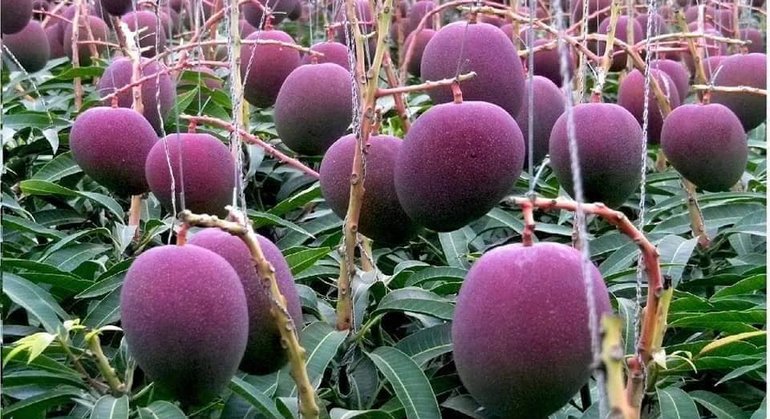


Mango trees (Mangifera indica L.) are grown in many African countries. Mangoes contribute to farmer family diets as well as serving as a cash crop. In Kenya, both local and naturalized exotic species are cultivated for their sweet and aromatic fruits, which are eaten fresh or processed into juice, jam, fruit leather, chutneys or dried fruits. In areas of mango production, there is markedly increased demand for high quality mango fruits for both domestic and export markets.
Things to consider before planting a grafted mango seedling;
Selection of seedlings for planting
It is important to identify and select seedlings that are healthy and big enough for planting as they have a higher chance of survival. Quality planting material (grafted) is important for good production/ high yields. Selected seedlings should not show signs of pests and diseases.
Transportation of seedlings for planting
Different means of transporting seedlings are used, depending on the distance from the nursery to the identified planting site. During transportation of seedlings, take caution not to pile them up on each as this can cause damage to the young trees. It is recommended that the seedlings are transported upright in boxes, plastic crates or bags as this will reduce the chance of damaging them. Water the selected seedling before transporting them from the nursery to the planting site. Watering is done to protect the seedling from drying up during the time of transportation.
Land preparation and planting
4
Management of mango fruit tree after planting: Erick/ICRAF 2016
Irrigation: Watering should be done immediately after planting in the field to foster proper establishment. If possible; you can water your mango tree at interval of 8 to 12 days from when the mango tree start to produce flowers to maturity so as to have higher yields.
Note; watering is not recommended 2 to 3 months before flowering as it will encourage increased branching and leaves development.
Protection: Where the fruit tree is planted on an open field particularly where animals are also grazed, it is advisable to protect the fruit tree against destruction by livestock, especially goats, by building a fence of sticks/ net around the planted fruit tree.
Manure and Fertilizer application: After about 3-6 months, start application of nitrogenous fertilizers (in case of fruit trees e.g. mango, pawpaw, oranges). Apply nitrogenous fertilizers in varied intervals to avoid leaching out (downward movement of
useful mineral or nutrients in water). Alternatively, properly prepared farm yard manure or compost, kitchen ash (left from cooking) and mulching can be used in place of fertilizers.
Pruning and training: The height and form of the fruit tree needs to be controlled. This is meant to guide the tree and facilitate its harvesting at its later stages. It is advisable that you carry out pruning in the first year to guide tree into desired shape,
and when trees are about 1 m from the ground, cap seedling to encourage side branches. Carry out pruning later for proper tree maintenance and should be carried out after fruit harvest. Control height to about 3.5 m and all branches at knee level
(about 0.5m) be pruned. Remove all dead branches to allow sunlight through canopy to the ground under the tree.
Flowering and fruit formation: Grafted fruit trees usually start to flower within two years from planting. However, fruit formation should be discouraged at this stage as it can affect growth of the fruit tree. For grafted mangoes, it is advisable that fruit formation is allowed from the fourth year onwards.
Pests and diseases: Fruit fly is the most common pests for mangoes and other fruits usually causing a lot of damage to and high losses of these fruits. The use of fruit fly traps is popular method of controlling fruit fly among other ways. Other pests include
gall midges and scales insects. Powdery mildew and anthracnose are the most common mango diseases mainly affecting the flowers, tender leaves and leading to development of black lesions on mango fruits. Powdery mildew can be controlled by
spraying using Sulphur or Bayleton, while anthracnose can be controlled using copper fungicides.
Maturity and harvesting: It takes between 90 – 160 days after flowering for the mangoes to reach maturity depending on variety. Good harvesting practices are necessary, mangos should not be removed from the tree by beating with a stick and
dropping to the ground. They should be picked by hand and if possible best to harvest with some stem (2 – 3 cm) attached to fruit. This reduces the latex which can cover the fruit if incorrectly harvested. Fruits are generally picked when they begin to change outer color e.g. from deep green to light green in some cultivars. Pick fruit by hand or clip them off with a long stock (part connecting the fruit to the branch) about 2 – 3 cm and pack fruit in a single layer with stalks facing downwards in a box or crate for transportation to the market.
Good postharvest handling should involve storage in boxes/ crates rather than sacks to avoid bruising.